Forums
- Forums
- Duggy's Reference Hangar
- RAF Library
- Martin-Baker MB 5
Martin-Baker MB 5
Post a reply
- Go to Previous topic
- Go to Next topic
- Go to Welcome
- Go to Introduce Yourself
- Go to General Discussion
- Go to Screenshots, Images and Videos
- Go to Off topic
- Go to Works in Progress
- Go to Skinning Tips / Tutorials
- Go to Skin Requests
- Go to IJAAF Library
- Go to Luftwaffe Library
- Go to RAF Library
- Go to USAAF / USN Library
- Go to Misc Library
- Go to The Ops Room
- Go to Made in Germany
- Go to Campaigns and Missions
- Go to Works in Progress
- Go to Juri's Air-Raid Shelter
- Go to Campaigns and Missions
- Go to Works in Progress
- Go to Skinpacks
- Go to External Projects Discussion
- Go to Books & Resources
-
10 years agoSun May 09 2021, 02:13pmDuggy
 Main AdminThe British Martin-Baker MB 5 was the ultimate development of a series of prototype fighter aircraft built during the Second World War. Neither the MB 5 nor its predecessors ever entered production, despite what test pilots described as excellent performance.
Main AdminThe British Martin-Baker MB 5 was the ultimate development of a series of prototype fighter aircraft built during the Second World War. Neither the MB 5 nor its predecessors ever entered production, despite what test pilots described as excellent performance.
Martin-Baker Aircraft actually began the MB 5 as the second Martin-Baker MB 3 prototype, designed to Air Ministry Specification F.18/39 for an agile, sturdy Royal Air Force fighter, able to fly faster than 400 mph. After the first MB 3 crashed in 1942, killing Val Baker, the second prototype was delayed. A modified MB 3 with a Rolls-Royce Griffon was planned as the MB 4, but a full redesign was chosen instead.
The re-designed aircraft, designated MB 5, used wings similar to the MB 3, but had an entirely new steel-tube fuselage. Power came from a Rolls-Royce Griffon 83 liquid-cooled V-12 engine, producing 2,340 hp (1,745 kW) and driving two three-bladed contra-rotating propellers. Armament was four 20 mm Hispano cannon, mounted in the wings outboard of the widely spaced retractable undercarriage.
It was built under the same contract that covered the building of the MB.3
The first flight of the MB 5 prototype, serial R2496, took place on 23 May 1944.[5] Performance was considered outstanding by test pilots, and the cockpit layout was praised by the Armament and Aircraft Experimental Establishment. The accessibility of the fuselage for maintenance was excellent, thanks to a system of detachable panels.
"In my opinion this is an outstanding aircraft, particularly when regarded in the light of the fact that it made its maiden flight as early as 23rd May 1944"
? Test pilot Capt. Eric Brown, 1948
Acknowledged as one of the best aerobatic pilots in the UK, S/L Janusz ?urakowski from the Aeroplane and Armament Experimental Establishment (A&AEE) at RAF Boscombe Down gave a spectacular display at the Farnborough Air Show in June 1946, with the Martin-Baker MB 5, a design he considered as a superlative piston-engined fighter, better in many ways than the Spitfire.
A Sad Ending to the MB5
Although the MB5 did little flying after this, the engineless airframe was used for training purposes by the Air Ministry Servicing Development Unit at RAF Wattisham, Suffolk, from 1948-49. The aircraft subsequently served as a ground target, the battered remains ending up at RAF Bircham Newton, Norfolk, in 1963. It was then burnt; an ignominious fate for an aircraft that represented the acme of piston-engined fighter development.
"Mr Martin?s Memorable M.B.5" ? Reprinted from Air International, 02/79
The fuselage primary structure of MB5 was of the now familiar steel tube construction, covered and faired with light, detachable metal panels, which offered exceptional accessibility to the equipment installations and for servicing. The engine-mounting consisted of two molybdenum-steel tapered cantilever booms, and here too the layout provided easy access to engine components and accessories. The engine was neatly cowled with panels which could be removed easily to lay bare the engine in a few minutes.
The wing was of the single-spar type, with the spar and leading edge forming a torsion-box of remarkable stiffness and strength; primary wing structure details were simple to produce and easy to repair. Flying controls were operated by torsion bars, which gave excellent positive control coupled with light operation. A sturdy wide-track undercarriage gave exceptionally good taxiing qualities, whilst its pneumatic operation was simple, effective and entirely trouble free.
It was, however, in the pilot's cockpit that one of MB5's main attractions lay. The cockpit was exceptionally well laid out, with all controls coming easily and readily to hand, within the pilot's reach. Instruments were grouped in an orderly fashion, allowing routine cockpit checks to be done in logical sequence. Fuel control was centred in one lever - a feature dear to the hearts of fighter pilots. Accessibility for servicing was provided by mounting the instruments on hinged panels, which opened into the cockpit. A special primary control-unit was neatly installed in a manner economical in space, yet effective in operation, and having the advantage of bringing vital control components within the easy scrutiny of routine inspection. The cockpit was cleanly floored, an unusual feature then in British military aircraft, which gave a pleasing impression of spaciousness combined with business-like utility.
Official reports of the day stated that the cockpit could advantageously be copied as standard for fighter aircraft. A one-piece transparent tear-drop canopy of neat design was fitted, provided with wheel control for operation by the pilot. The mechanism was perfectly balanced and easy to operate, whilst jettisoning was clean, safe and effective. The four-cannon installation, utilising Martin-Baker flat belt-feed mechanisms, was exceptionally well arranged. The functional efficiency and destructive power of this weapon was noteworthy among contemporary aircraft, whilst the excellent accessibility of the installation permitted easy servicing and ensured a quick turnaround under operational conditions.
Not all its virtues rested in the excellence of its engineering, for in the air MB5 was unquestionably ahead of contemporary piston-engined fighters, with a top speed of 460 m.p.h. Early flight trials, in the capable hands of Bryan Greensted, quickly established it as an exceptionally good aircraft, and some older readers will remember the polished demonstration of MB5 by Squadron-leader Zurakowski as an outstanding event at the SBAC AIr Show at Radlett in 1946.
Pilots liked the ease of taxiing provided by a wide-track undercarriage, the excellent all-round view, the absence of swing on take-off and landing, the spectacular rocket-like climb, the surge of power, quickly responding to throttle openings, with a corresponding bite into the air urging the aircraft forward, and the feeling of confidence given by a robust structure. They also liked sitting in a clean cockpit from which the aircraft could be flown effectively with precision and safety.
Why this aircraft was not put into production remains one of the aircraft industry's minor mysteries, and one which is often the subject of interesting speculation. Some will say that, as a piston-engined aircraft, it came too late to be acceptable in the advent of jet fighters. However, had a decision about its future been taken early by the authorities, it could have gone into production soon enough for it to have reached squadrons in sufficient numbers to have been engaged effectively in World War II. Disappointment in failing to put MB5 into production was felt keenly by all at Martin-Baker and shared by many Royal Air Force officers and other officials.
Below cockpit
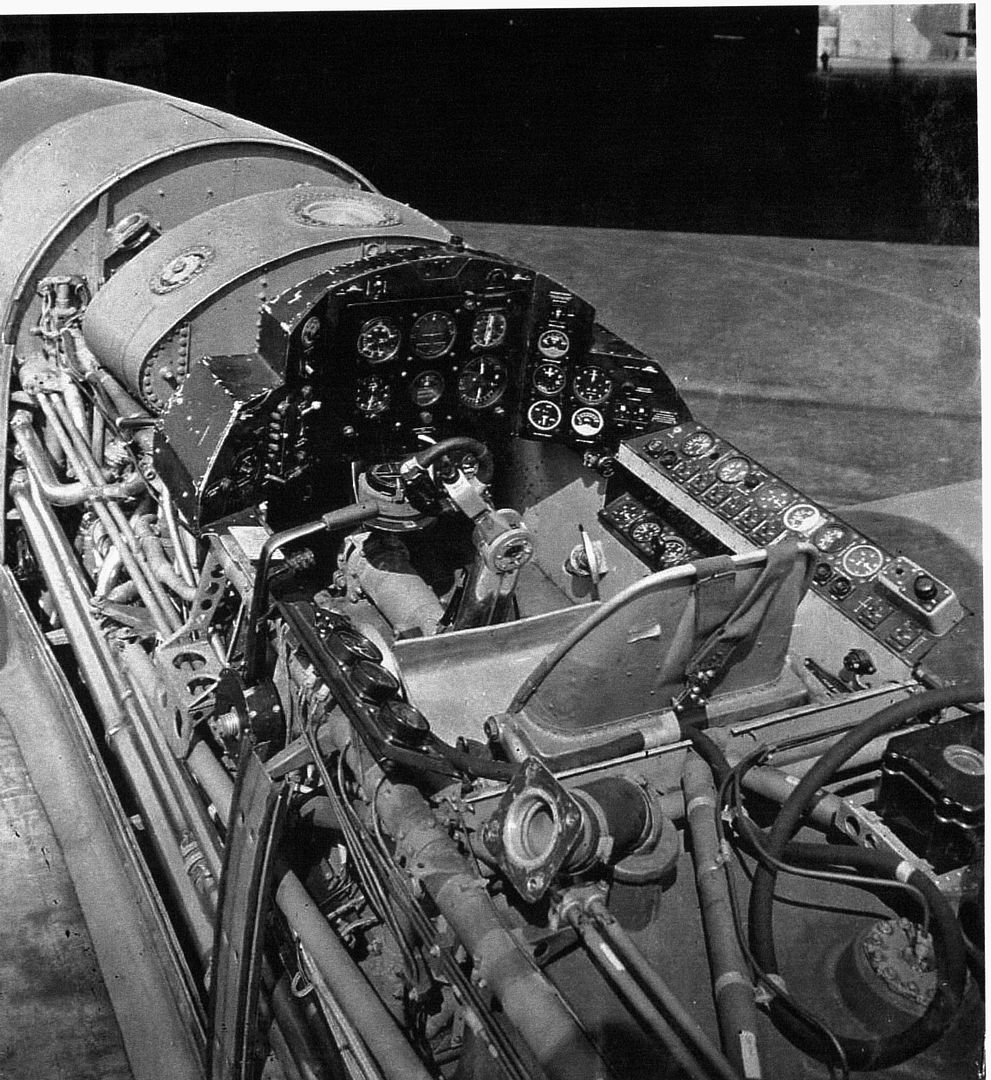
Enjoy the rest.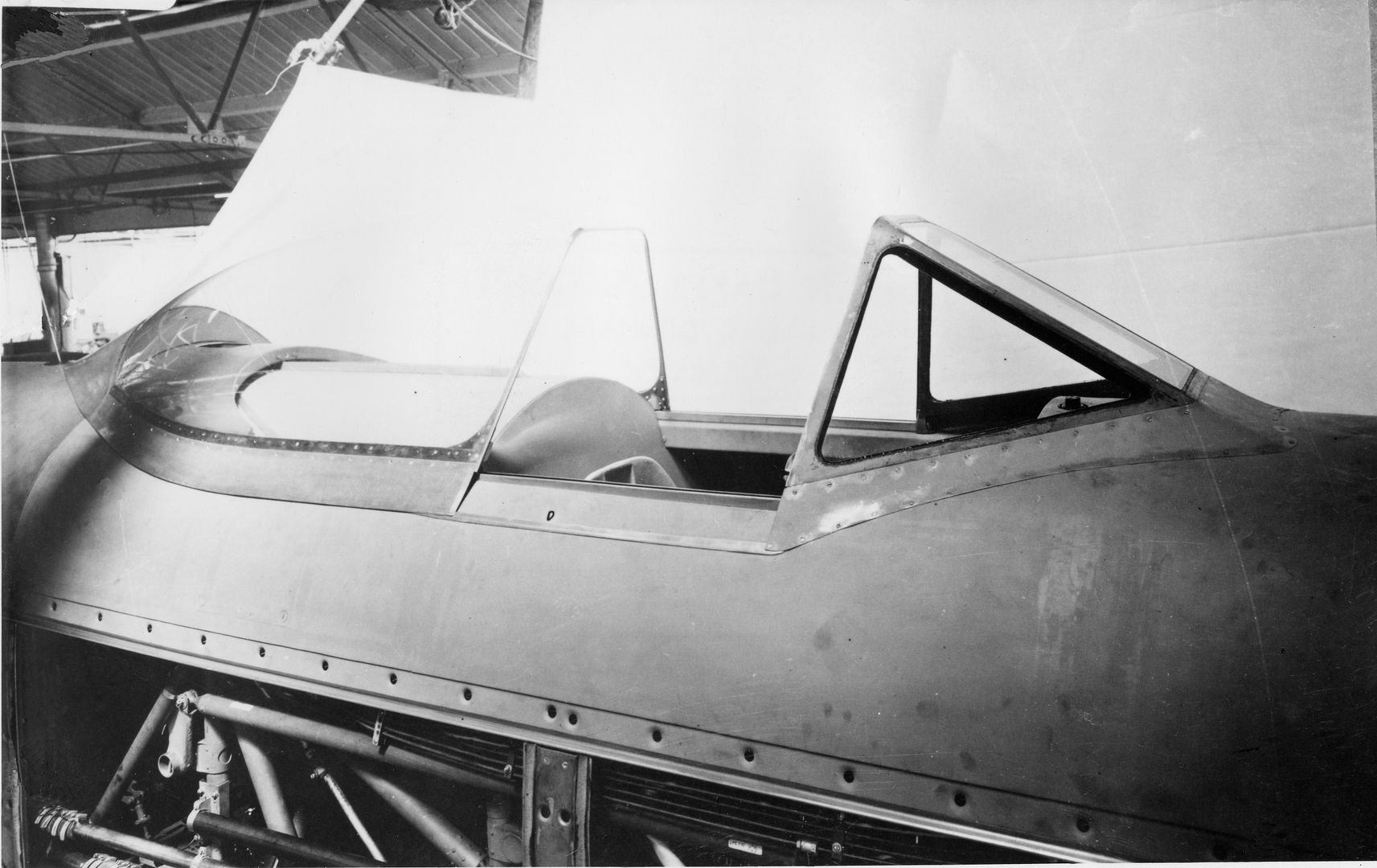
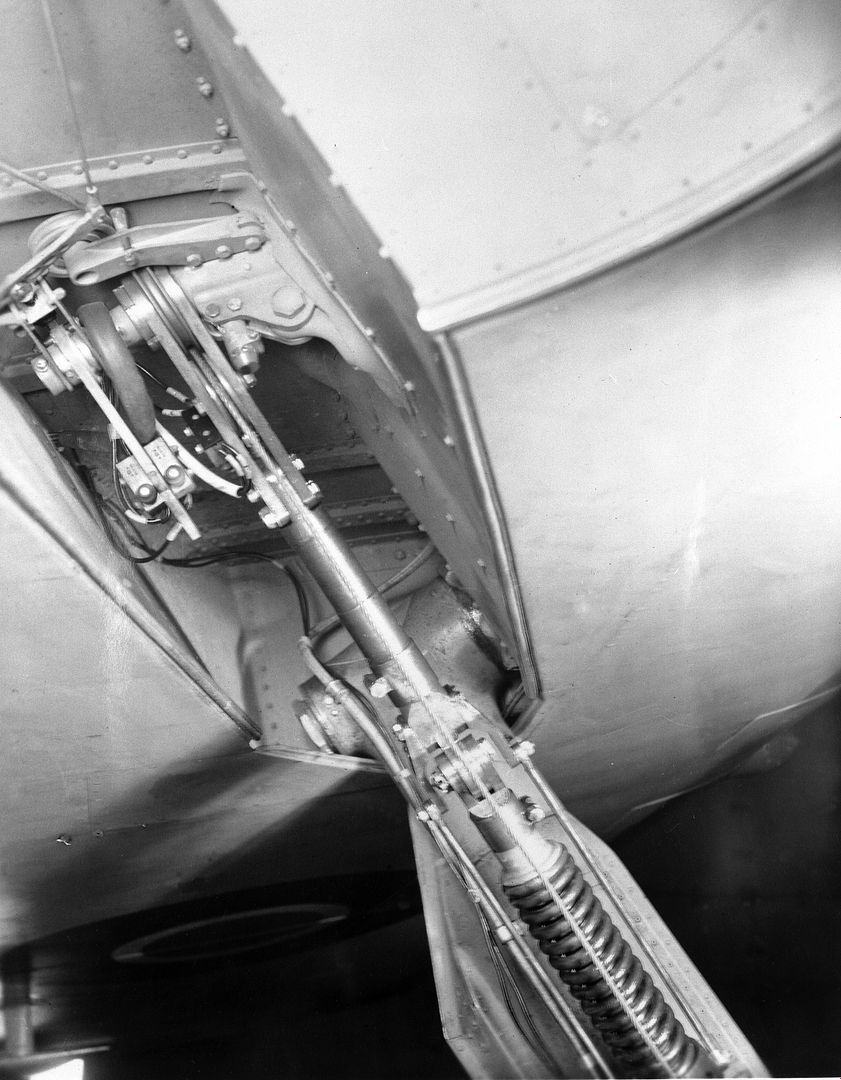
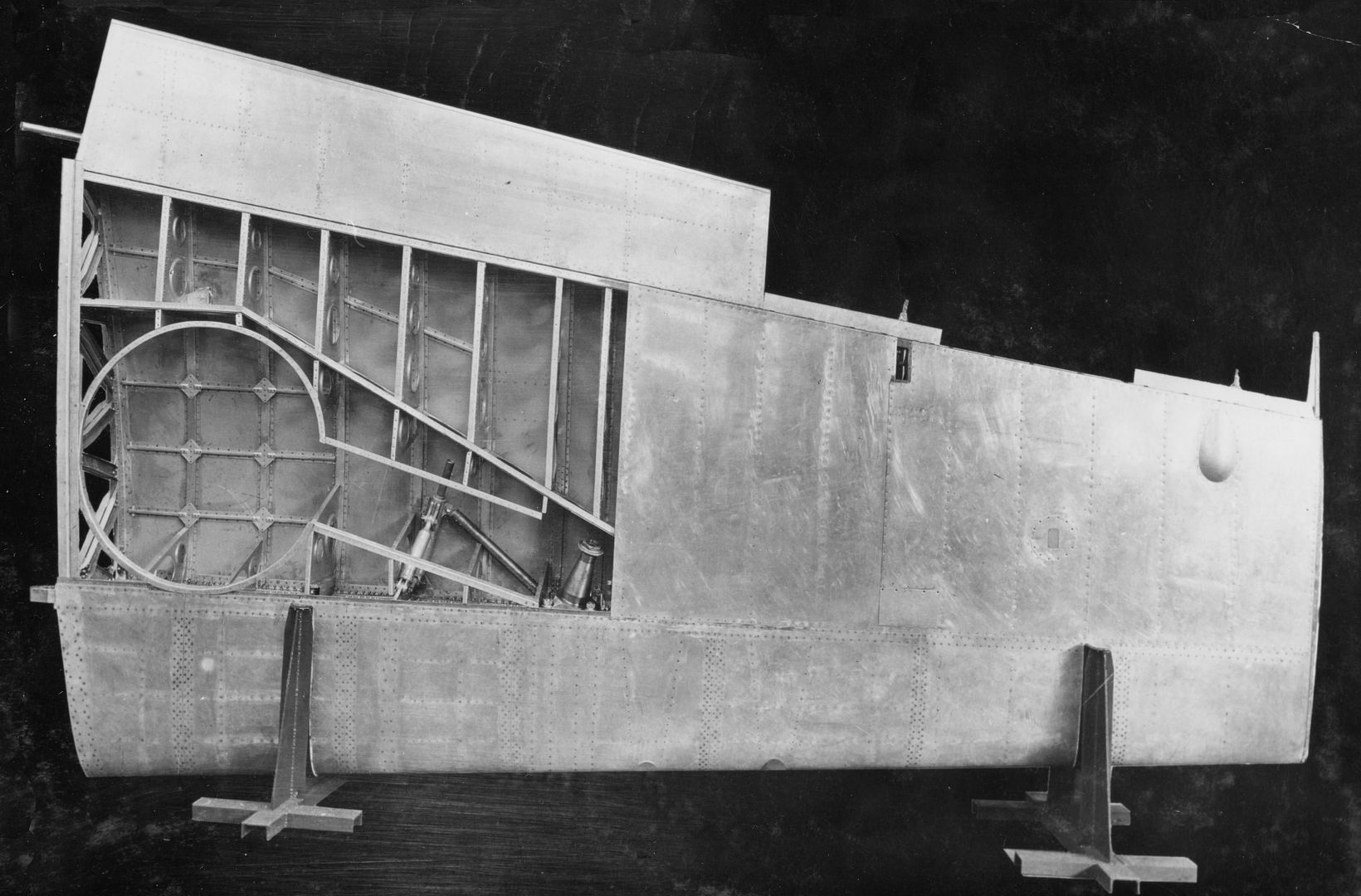


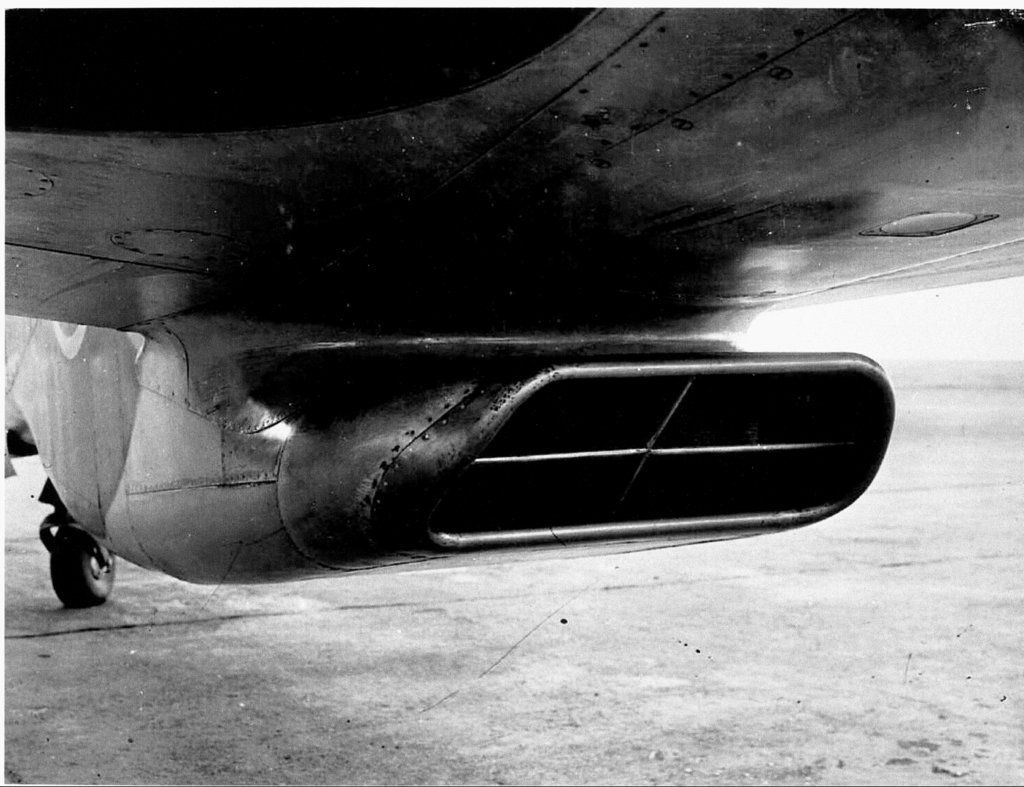
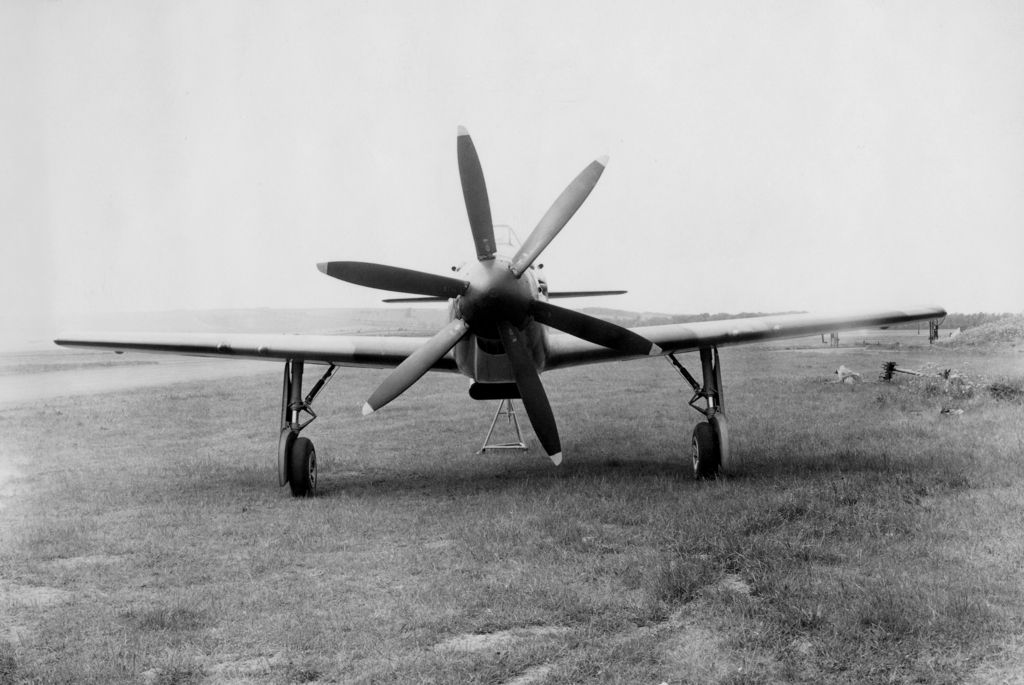
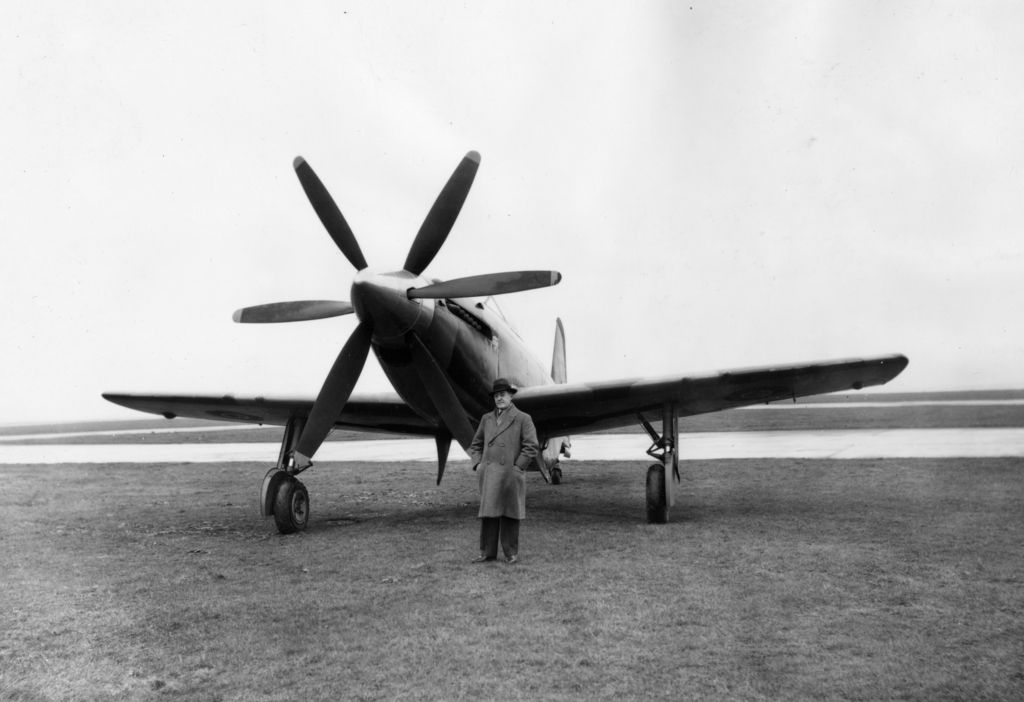
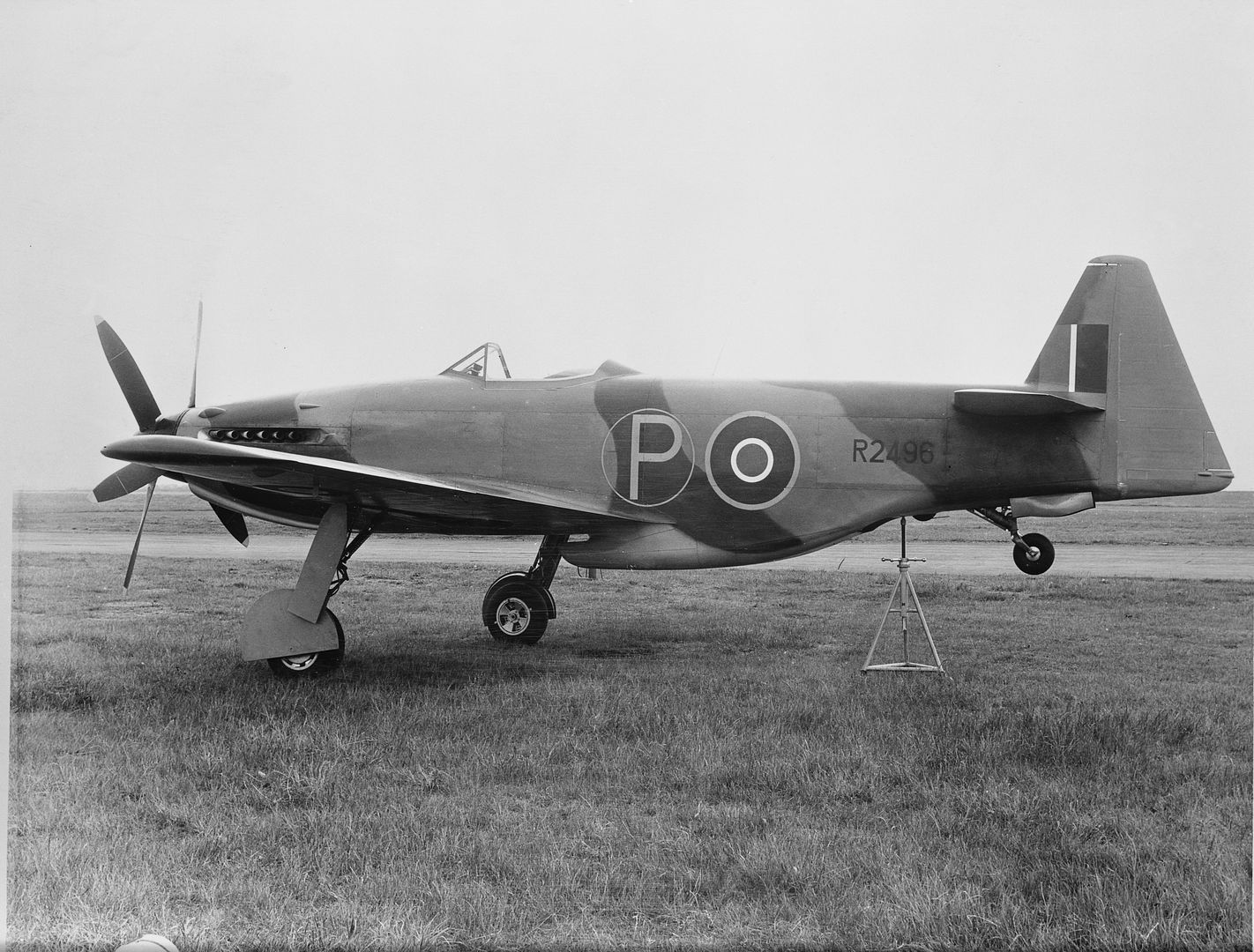
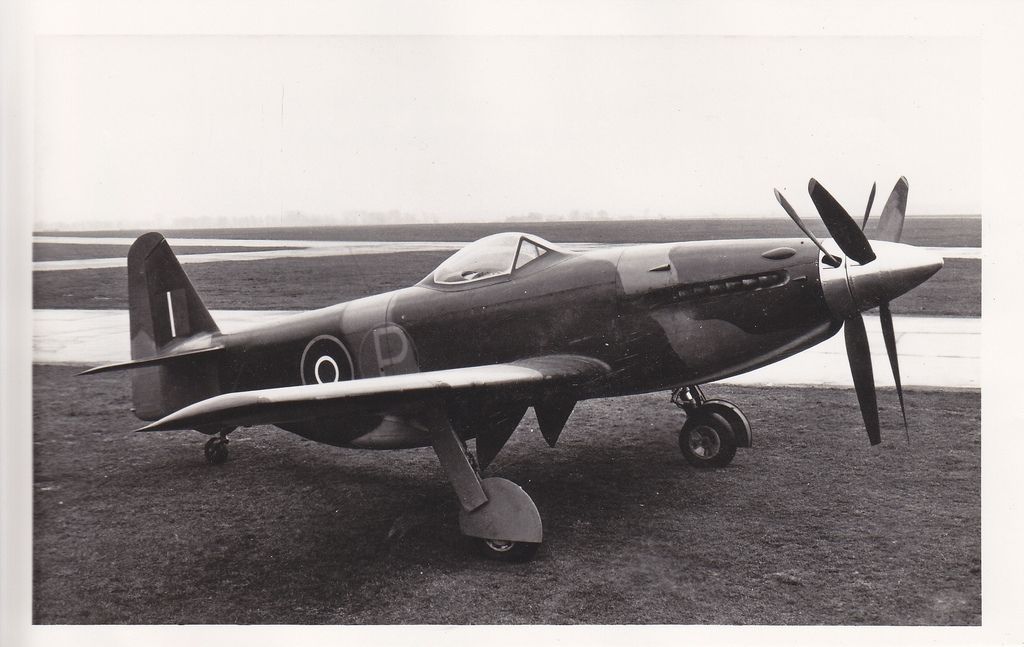
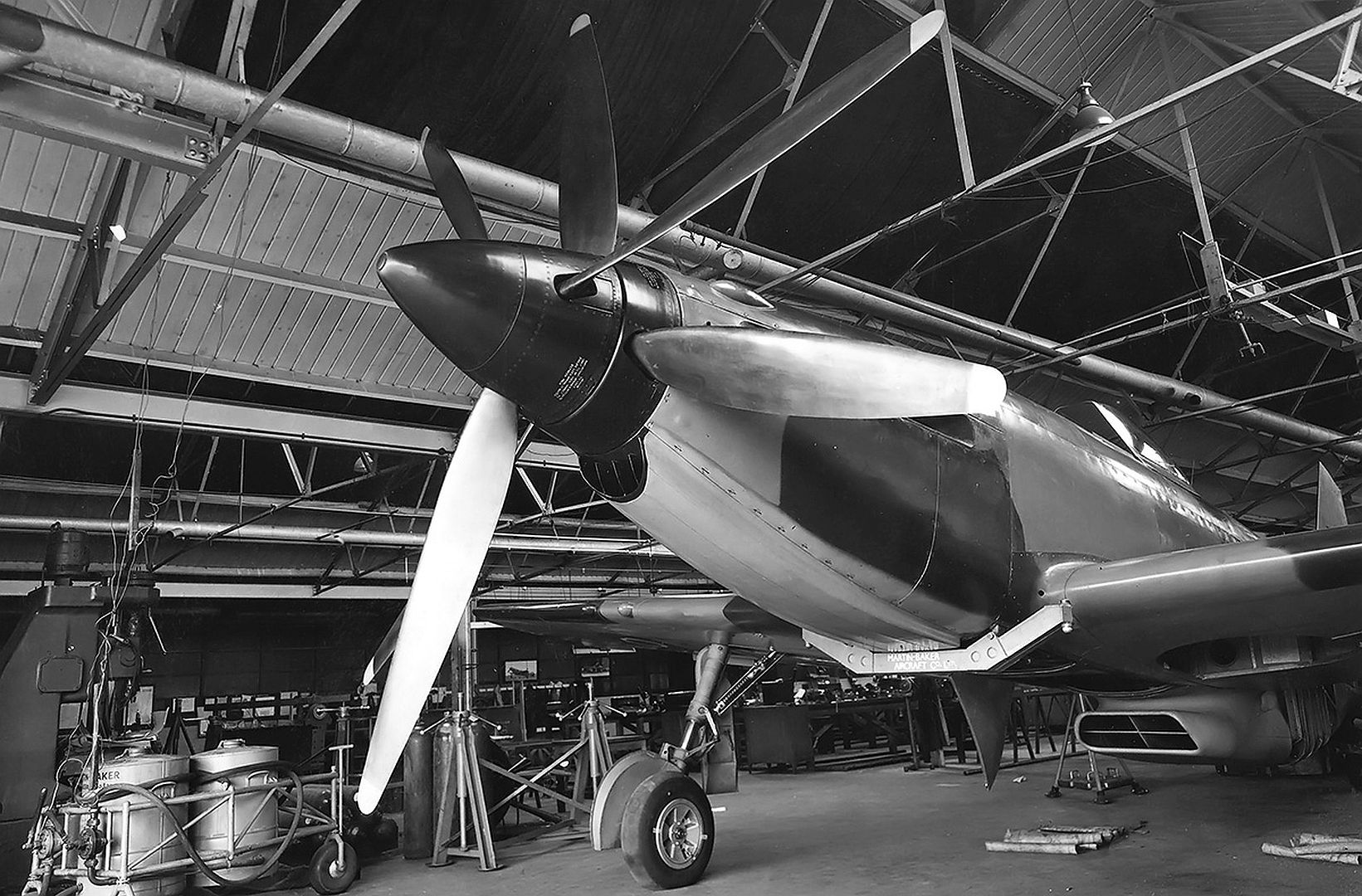
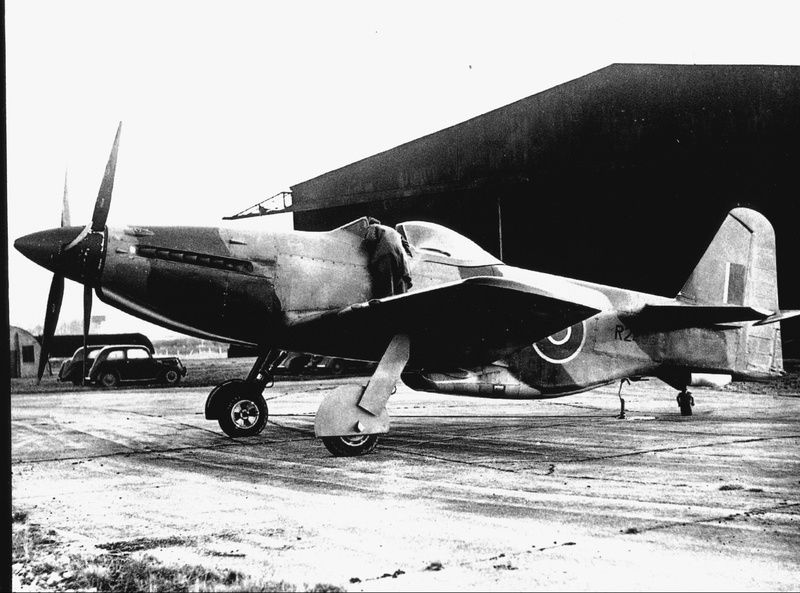

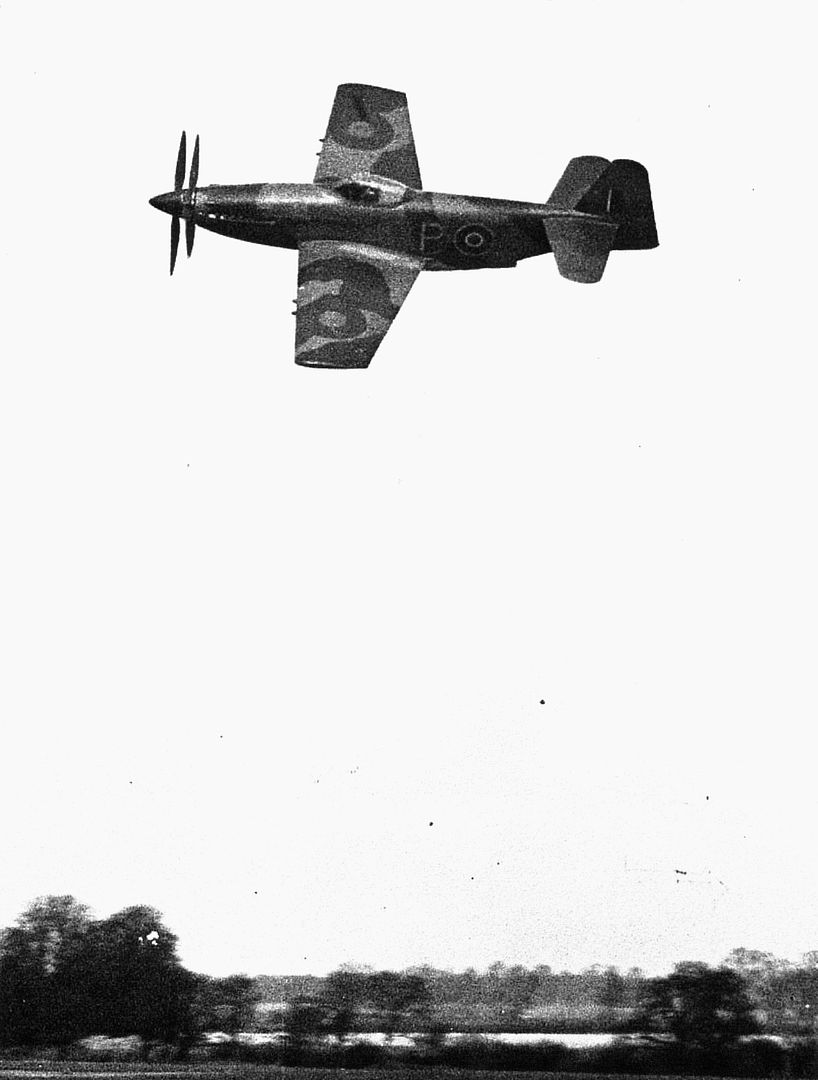
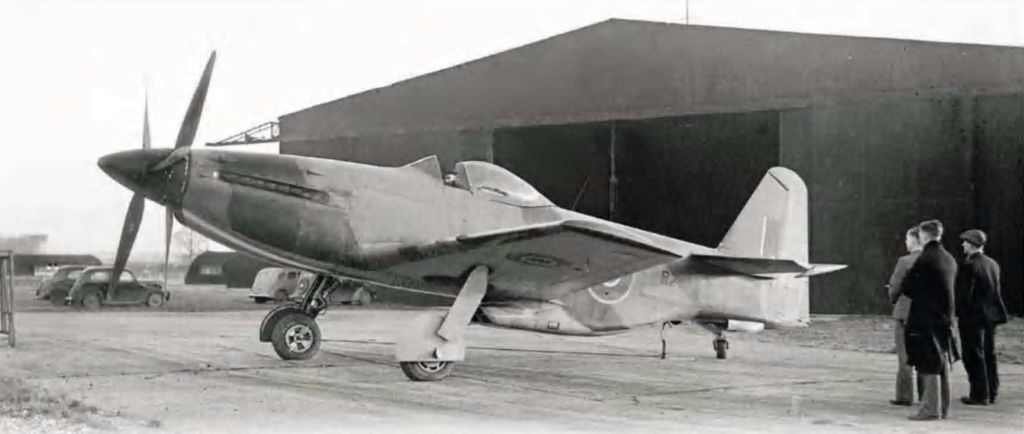
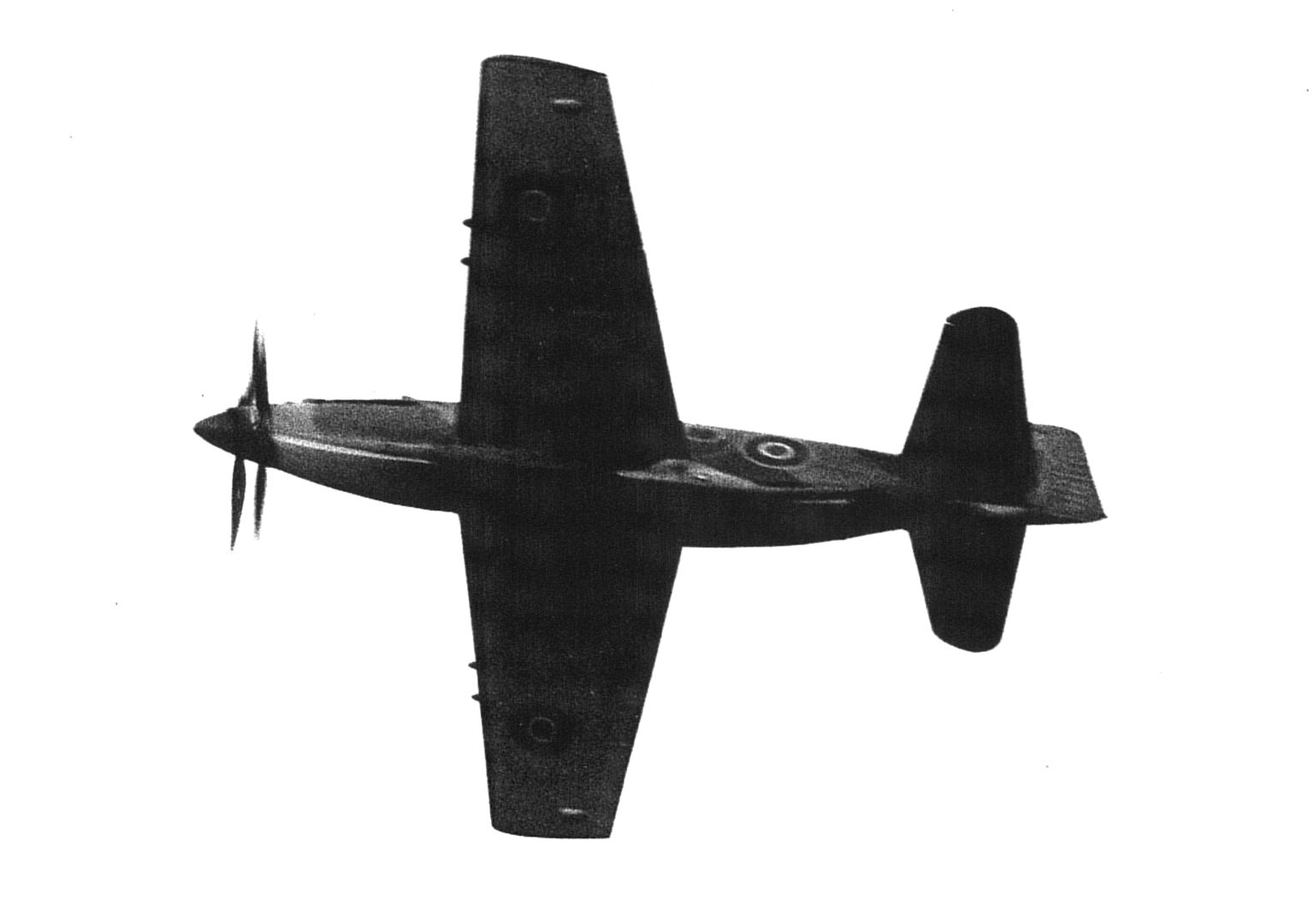
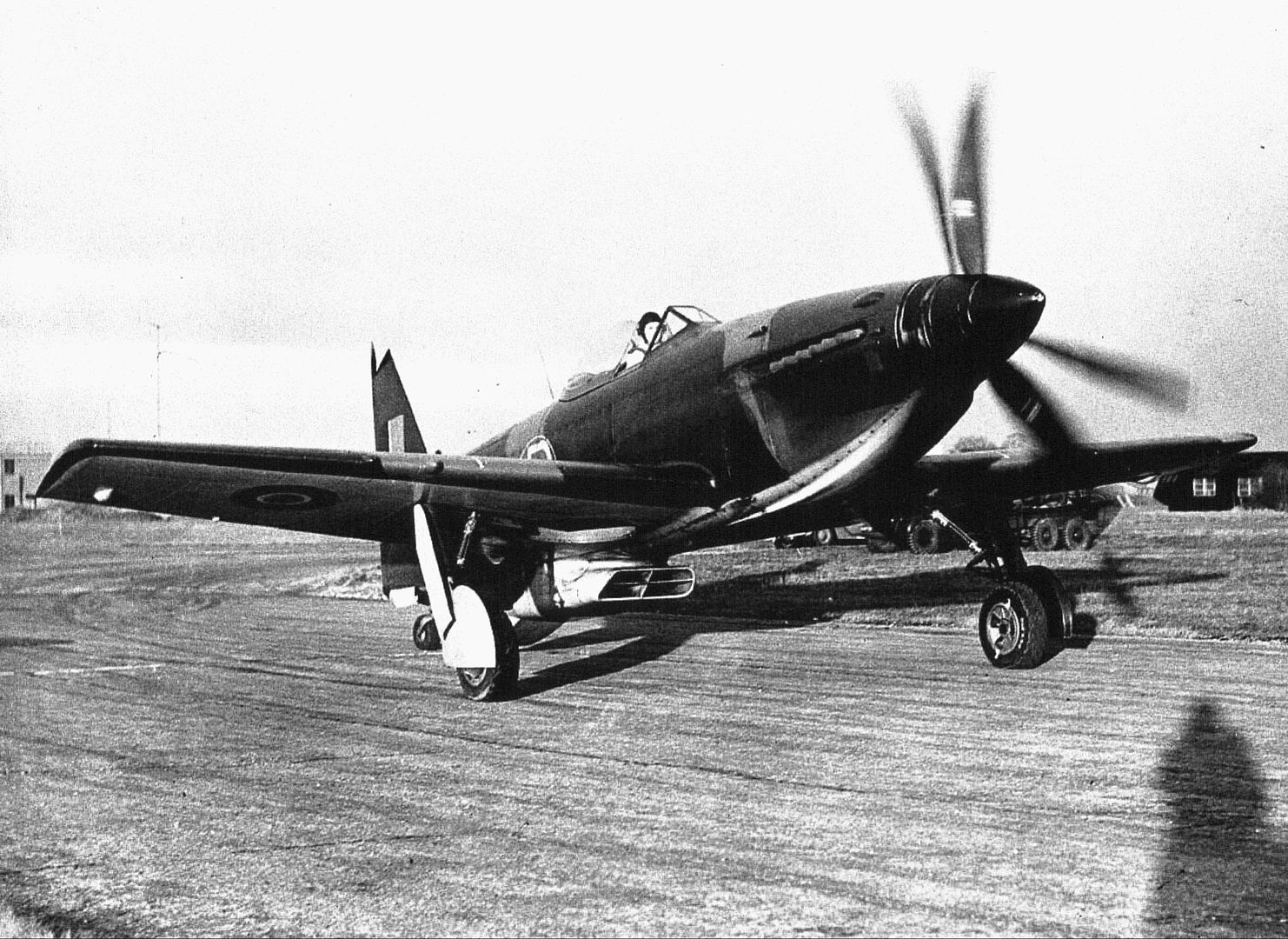
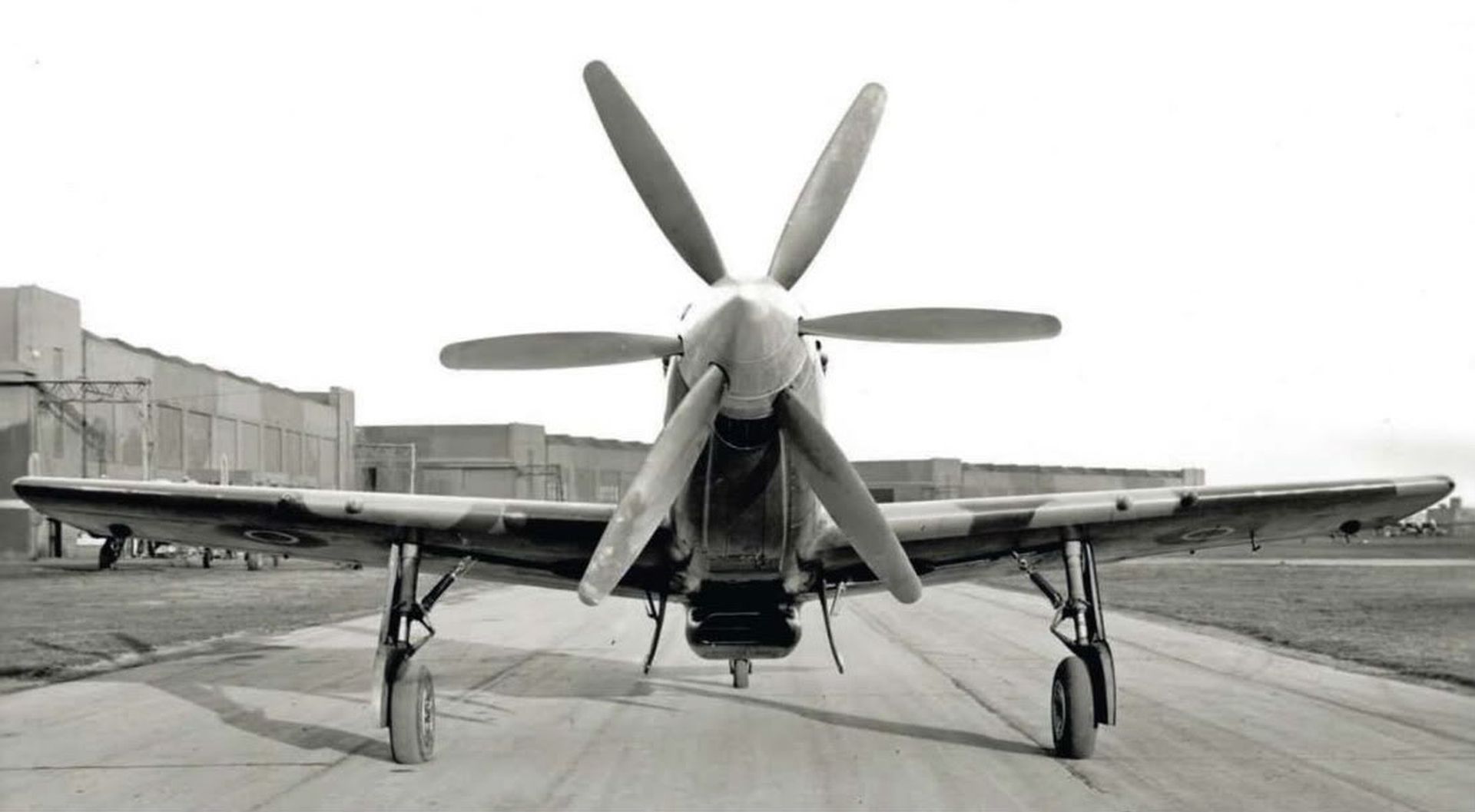
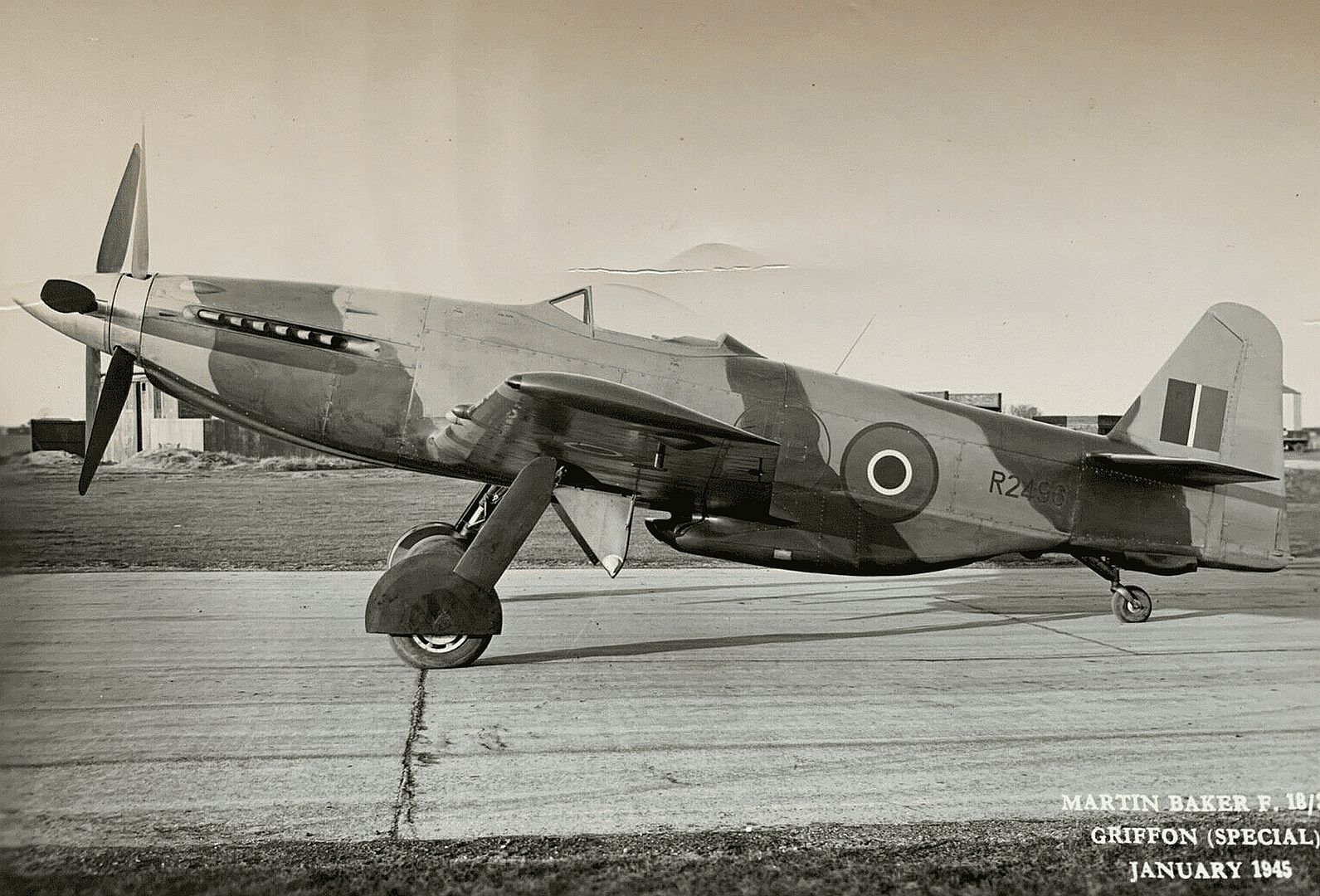
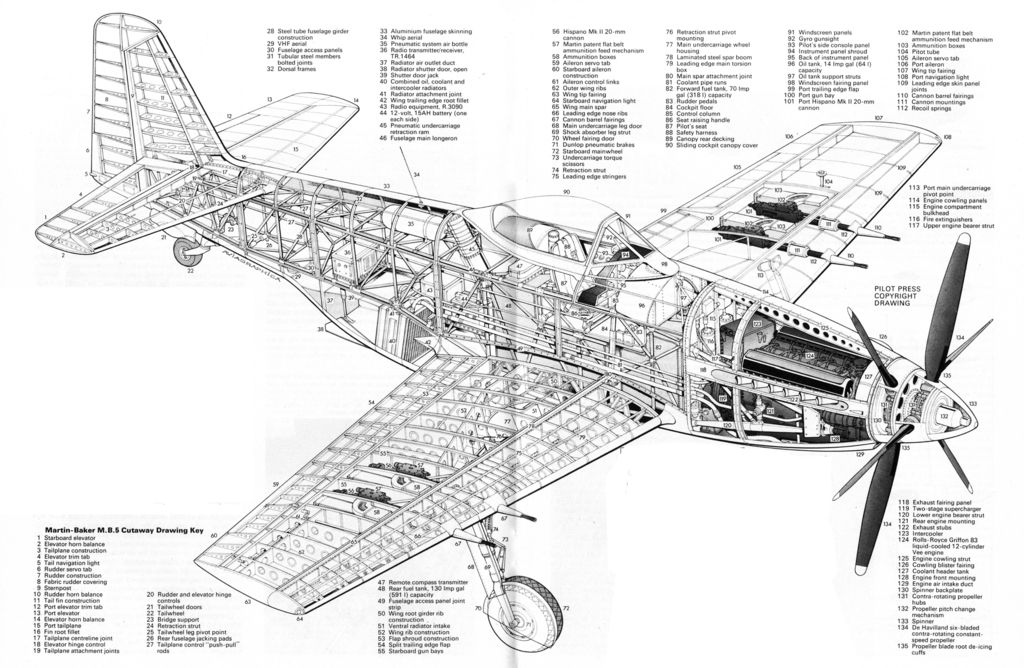
General characteristics
Crew: one
Length: 37 ft 9 in (11.5 m)
Wingspan: 35 ft 0 in (10.7 m)
Height: 15 ft 0 in (4.5 m)
Wing area: 262 ft? (24.3 m?)
Empty weight: 9,233 lb (4,188 kg)
Loaded weight: 11,500 lb (5,216 kg)
Max. takeoff weight: 12,090 lb (5,484 kg)
Powerplant: 1 ? Rolls-Royce Griffon 83 liquid-cooled V-12 engine, 2,340 hp (1,745 kW)
Performance
Maximum speed: 460 mph (740 km/h) at 20,000 ft (6,100 m)
Range: 1,100 mi (1,770 km)
Service ceiling: 40,000 ft (12,190 m)
Rate of climb: 3,800 ft/min (19.3 m/s)
Armament
Guns: 4? 20 mm Hispano Mk.II cannon
-
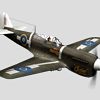 AdminFor me this is one of the great 'what if?' aircraft along with the TSR-2 and CF-105 Arrow. Oddly, I'm surprised to hear that it was such a great performer as I'm a believer of the 'if it looks right it flys right' idea yet it's such an awkward looking aircraft!
AdminFor me this is one of the great 'what if?' aircraft along with the TSR-2 and CF-105 Arrow. Oddly, I'm surprised to hear that it was such a great performer as I'm a believer of the 'if it looks right it flys right' idea yet it's such an awkward looking aircraft!
Post a reply
- Go to Previous topic
- Go to Next topic
- Go to Welcome
- Go to Introduce Yourself
- Go to General Discussion
- Go to Screenshots, Images and Videos
- Go to Off topic
- Go to Works in Progress
- Go to Skinning Tips / Tutorials
- Go to Skin Requests
- Go to IJAAF Library
- Go to Luftwaffe Library
- Go to RAF Library
- Go to USAAF / USN Library
- Go to Misc Library
- Go to The Ops Room
- Go to Made in Germany
- Go to Campaigns and Missions
- Go to Works in Progress
- Go to Juri's Air-Raid Shelter
- Go to Campaigns and Missions
- Go to Works in Progress
- Go to Skinpacks
- Go to External Projects Discussion
- Go to Books & Resources
